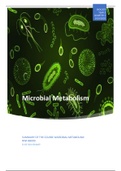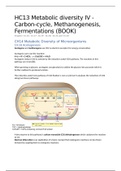Syntrophy Study guides, Class notes & Summaries
Looking for the best study guides, study notes and summaries about Syntrophy? On this page you'll find 11 study documents about Syntrophy.
All 11 results
Sort by
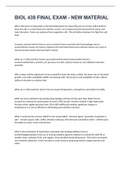
-
BIOL 438 FINAL EXAM MATERIAL to pass!
- Exam (elaborations) • 12 pages • 2023
-
- $12.99
- + learn more
Why is the pH of 4.6 important in the food industry The pH of 4.6 is the critical limit for food since pH is a critical factor for intrinsic control. 4.6 or below prevents the growth of spores and toxin formation. Toxins are produced from vegetative cells. This pH defines between the high/low acid food Compare contrast Intrinsic factors versus extrinsic factors associate with food spoilage. Intrinsic factors are factors related to the food itself whereas the extrinsic factors are a part...
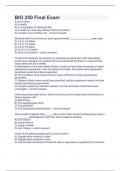
-
BIO 250 Final Exam 2023 with verified questions and answers
- Exam (elaborations) • 13 pages • 2023
-
Available in package deal
-
- $12.99
- + learn more
A pure culture A) is sterile. B) is a population of identical cells. C) is made of a precisely defined chemical medium. D) contains one microbial cell. b Microbial cells first evolved on Earth approximately ________ _______ years ago. A) 1.6 to 1.8 million B) 7.0 to 7.2 million C) 3.8 to 3.9 billion D) 10.5 to 11.5 billion E) None of the above c Predict how Pasteur's conclusions on spontaneous generation with swan flasks would have changed if he worked with and maintai...
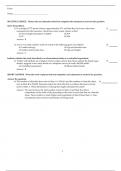
-
.Ischemia and other toxic injuries increase the accumulation of intracellular calcium as a D)physiologic hypertrophy D)decreasing protein synthesis and function D)attraction of calcium to fatty infiltrates. result of: C)rapid phagocytosis A)caspase activ
- Exam (elaborations) • 29 pages • 2023
-
- $19.99
- + learn more
.Ischemia and other toxic injuries increase the accumulation of intracellular calcium as a D)physiologic hypertrophy D)decreasing protein synthesis and function D)attraction of calcium to fatty infiltrates. result of: C)rapid phagocytosis A)caspase activation D)protein p53 deficiency 4.Bacteria and viruses cause cell damage by , which is unique from the 3.A person eating peanuts starts choking and collapses. His airway obstruction is partially cells. A)release of stored calcium fro...
Detailed summary of the lectures from Microbial metabolism, including images. I completed this course with a 8,5.
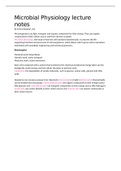
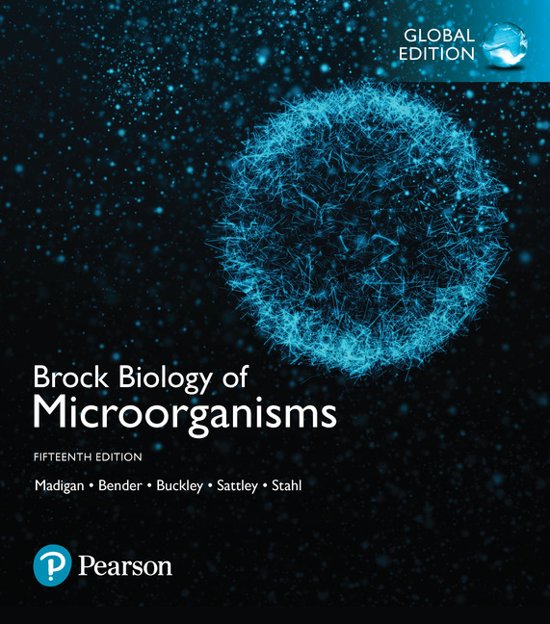
-
Lectures notes microbial physiology, MIB20306, biotechnology
- Class notes • 20 pages • 2021
-
Available in package deal
-
- $7.72
- + learn more
Lectures notes of all lectures of the course Microbial Physiology at Wageningen University. With guest lectures from Shell and Corbion. Useful for biotechnology students.
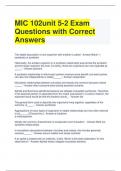
-
MIC 102unit 5-2 Exam Questions with Correct Answers
- Exam (elaborations) • 5 pages • 2024
-
Available in package deal
-
- $13.29
- + learn more
MIC 102unit 5-2 Exam Questions with Correct Answers The stable association of one organism with another is called - Answer-Blank 1: symbiosis or symbiotic Historically, the smaller organism in a symbiotic relationship was termed the symbiont and the larger organism the host. Currently, these two organisms are now regarded as . - Answer-partners A symbiotic relationship in which each partner receives some benefit, but each partner can also live independently is called . - Answer-coopera...
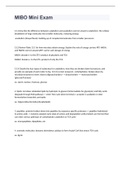
-
MIBO Mini Exam WITH 100% VERIFIED SOLUTIONS
- Exam (elaborations) • 27 pages • 2023
-
- $10.49
- + learn more
13.1 Describe the difference between catabolism and anabolism -catabolism: the cellular breakdown of large molecules into smaller molecules, releasing energy -anabolism (biosynthesis): building up of complex biomolecules from smaller precursors 13.2 Review Table 13.1 for how microbes obtain energy. Explain the role of energy carriers ATP, NADH, and FADH2 ATP: carrier and storage of energy NADH: donate e- to the ETS--product of glycolysis and TCA FADH2: donate e- to the ETS--product o...
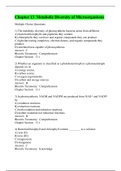
-
Chapter 13 Metabolic Diversity of Microorganisms,100% CORRECT
- Exam (elaborations) • 28 pages • 2021
-
- $17.49
- + learn more
) The metabolic diversity of photosynthetic bacteria stems from different A) bacteriochlorophylls and pigments they contain. B) chlorophylls they can have and organic compounds they can produce. C) light-harvesting complexes, electron donors, and organic compounds they produce. D) unrelated taxa capable of photosynthesis. 2) Whether an organism is classified as a photoheterotroph or a photoautotroph depends on its A) energy source. B) carbon source. C) oxygen requirements. D) carbon a...
Summary about the lecture and corresponding literature about Metabolic diversity - carbon cycle, Methanogenesis and fermentations.
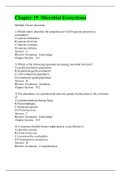
-
Chapter 19 Microbial Ecosystems,100% CORRECT
- Exam (elaborations) • 18 pages • 2021
-
- $17.49
- + learn more
Which metric describes the proportion of EACH species present in a community? A) species abundance B) species diversity C) species evenness D) species richness 2) Which of the following represents increasing microbial diversity? A) guild-community-population B) population-guild-community C) cell-community-population D) community-guild-population 3) The abundance of cyanobacterial mats has greatly declined due to the evolution of A) antimicrobial-producing fungi. B) bacteriophages...

How did he do that? By selling his study resources on Stuvia. Try it yourself! Discover all about earning on Stuvia

